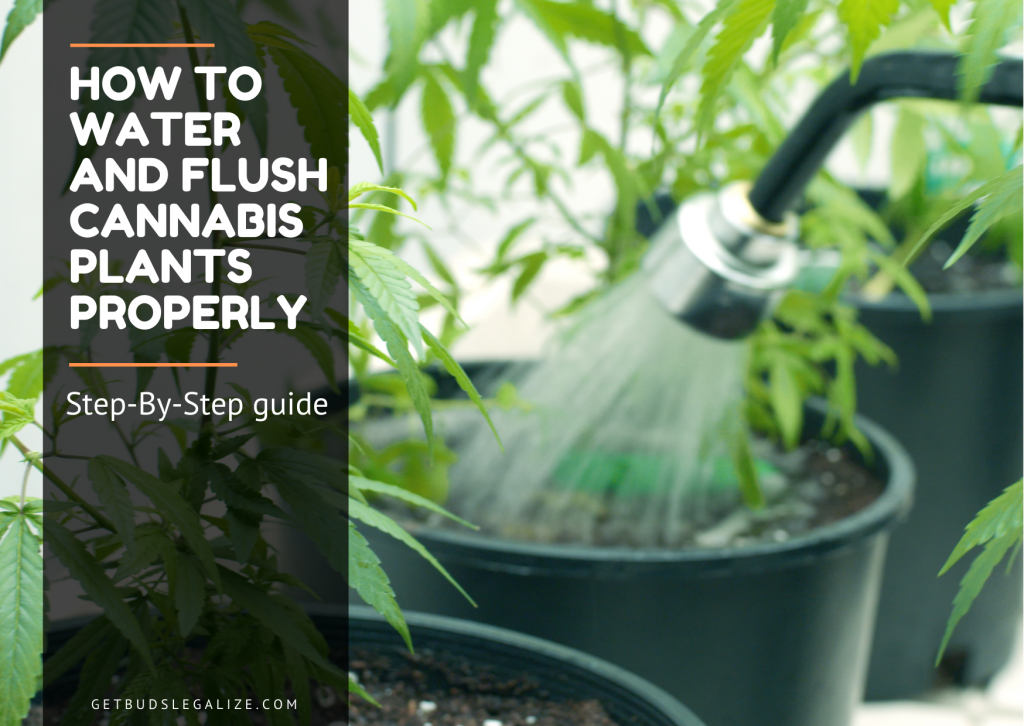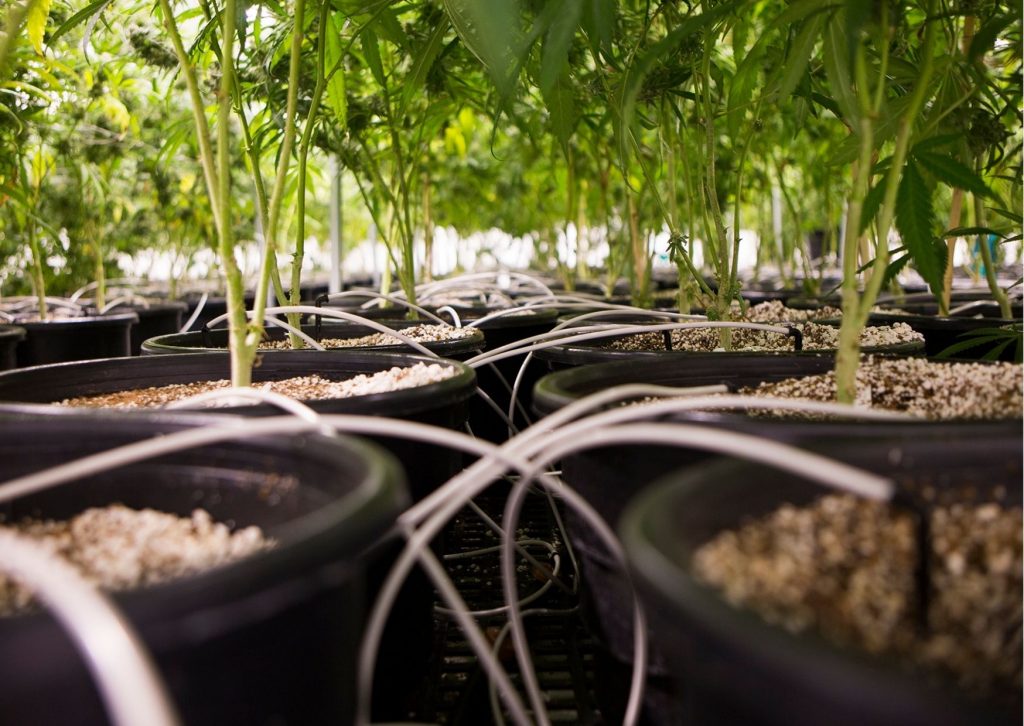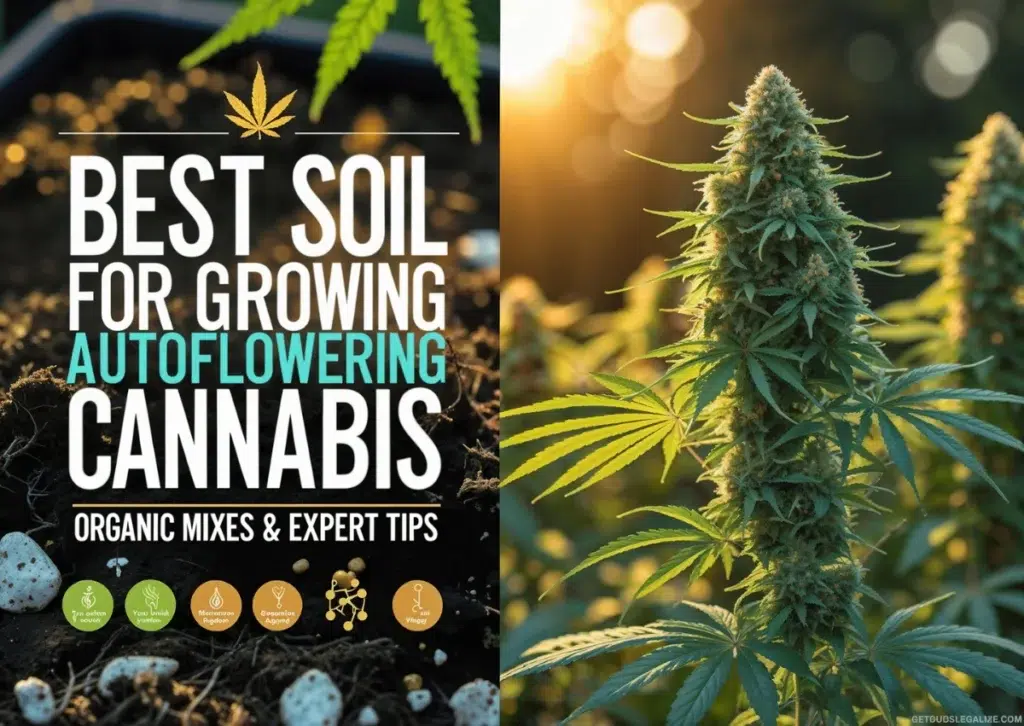The Best Way To Watering And Flushing Cannabis Plants Correctly
When it comes to watering or flushing cannabis, there are a few things you should know. There is a reason for this. Your plants need more than just moist soil, so they can absorb water and nutrients.
If you water your plants properly, they will grow more quickly and produce more buds for you. Watering your plants is one of the most important things you must learn for your cannabis garden.
This is the definitive guide to how watering and flushing your cannabis plants. There is a reason you should water your plants. It’s not just about getting the soil wet. It’s about providing your plants with the right environment in which they can thrive.
Following our discussion on knowing how much water you should provide your plants. Let’s explore why it is important to flush your cannabis plants.
When you start growing medical marijuana, it is extremely important to flush your plants. Flushing ensures that they will be clean of any nutrients or chemicals, that could potentially cause harmful effects on the end-user. And help restore the pH level of the soil, which allows plants to absorb nutrients and grow at a healthy rate.
Table of content:
- How to Know When Plants Needs Watering
- How Much Should You Water Your Cannabis Plants?
- How Often Should You Water Your Plants?
- What If My Plant Gets Too Much Or Too Little Water?
- Which Is The Best Way To Water My Plants?
- When Is The Right Moment To Stop Watering Before Harvesting?
- Are You Using The Right Size Container?
- Determinate The Quality Of The Water You Are Using: Testing pH and PPM
- What Is The Best Water Source For Your Plants?
- What Does Flushing Cannabis Mean?
- Why Do I Need To Mlush My Cannabis Plants?
- When Flushing Cannabis In The Vegetative Stage Is a Good Practice?
- When And What Are The Benefits Of Flushing Cannabis Before Harvesting?
- When Flushing Cannabis Before Harvesting In Hydroponics System?
- How To Flush Your Cannabis Plants
- When Flushing Cannabis Is Not Necessary?
- In summary
How to Know When Plants Needs Watering
It’s easy to tell if your plants need water—just stick your finger into the soil up to the first knuckle or lift the pots and feel their weight.
Although this will take a few attempts, try lifting your pots after watering to get a sense of how heavy they are when full of water. A full container will be noticeably heavy while an empty one will hardly weigh anything at all. Make sure that you’re using enough water to fill the pot and have some extra on hand in case you have to re-water during your plants’ maturation cycle.
If you find your plants have stopped producing new leaves, have yellowed leaves, or are drooping more than usual, you have probably over-or under-watered it. The tips of the leaves are curled in an overwatered plant, but in an underwatered one they are a lighter shade of green and look limp.
To avoid either extreme, start paying attention to how often you water your plants. Keep a log so that you don’t forget when you last watered them and try to give them at least two to three days between watering.
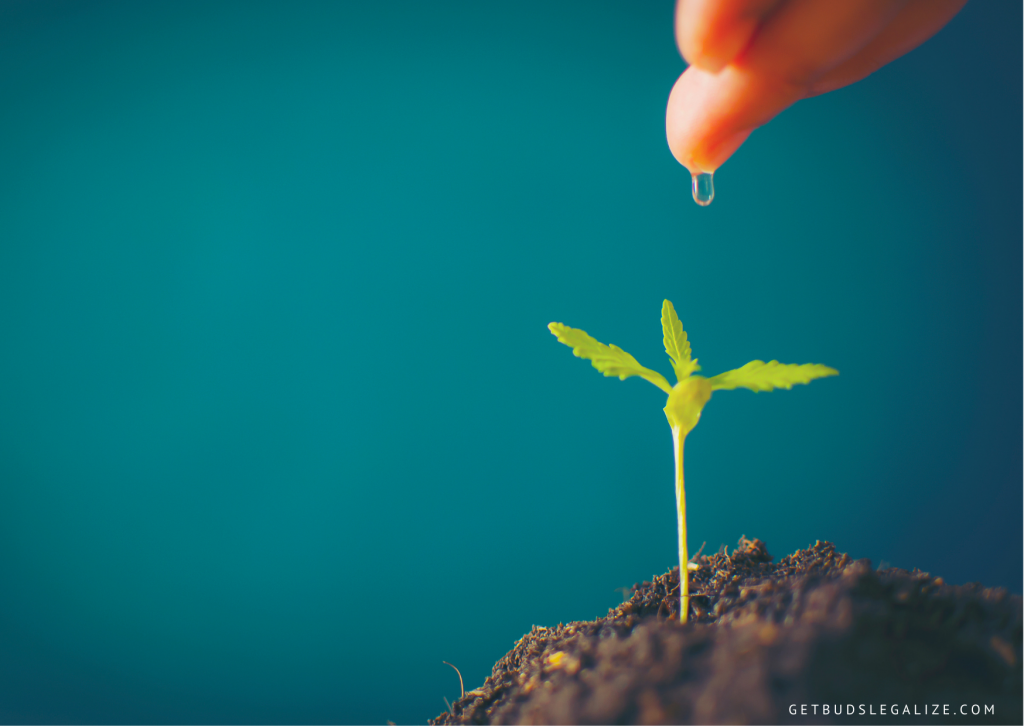
How Much Should You Water Your Cannabis Plants?
Several factors contribute to how much water cannabis plants need, including their size, temperature, overall health, and at which stage they are.
When watering a plant, it’s important to water until the top layer of soil is saturated. You can tell when soil is wet enough by observing how water runs off the surface of the soil after watering or how long water sits on the surface of the soil before draining out of the bottom of the pot.
If a pot is dry, the water will go straight through the pot and come out to the bottom from the drainage holes.
When this happens, give the plant a little more water, and then come back to it again after 20 minutes and do it again. This method ensures that all of the soil will be wet correctly.
Give the plants more water as they get bigger and get hotter outside. Bigger plants need more water, but they also have the ability to hold more. Therefore, they don’t need to be watered as often. As the weather gets warmer and hotter, you will need to water your cannabis plants more often.
How Often Do You Water Marijuana Plants?
Plants need water to grow, but too much or too little can be detrimental to their health. When growing cannabis, you must know how to properly water them, otherwise, your plants will suffer and may even die.
Soil-grown plants should be watered once the surface of the soil is dry, up to 1/2 inch deep. Hydroponic setups are trickier because you’ll need to check specific gravity levels before watering your plants.
The amount of water your plants need depends on how much sun the plant is getting, the temperature, its overall health, and what stage of growth it’s in, smaller plants will need less water than larger ones.
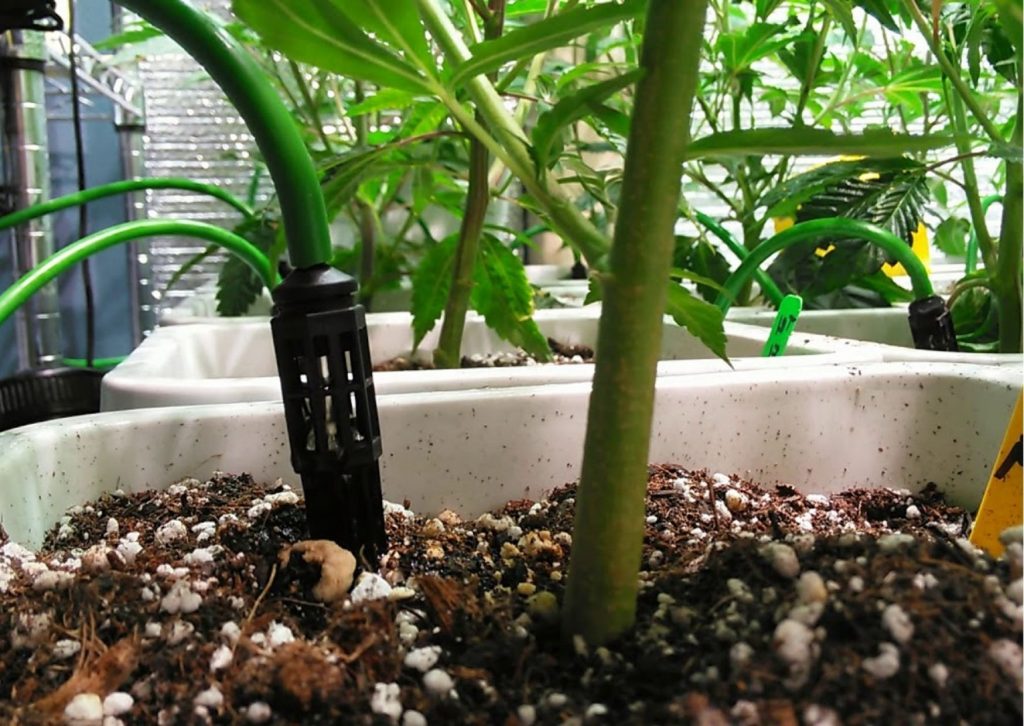
What If My Plant Gets Too Much or Too Little Water?
One of the most common mistakes that beginner marijuana growers make is overwatering the marijuana plant. This occurs when the soil becomes damp, which prevents roots from breathing. Of course, when this happens, oxygen can’t be absorbed into the plant, which will kill your marijuana plant. You must learn how to avoid overwatering marijuana so that you don’t lose your crop of weed.
In general, you’ll want to provide enough water for the soil to be wet down at least six inches from the surface. If you can stick your finger into the soil, it feels damp. Your plants will need more water as they grow. The size of their root systems determines how much water they require.
Which Is The Best Way To Water My Plants?
Now that you’ve started growing your marijuana, it’s time to learn how to water your plants. The frequency of watering will vary depending on the size of the pot, light intensity, and environmental conditions.
Cannabis plants can die if applying too much or too little water. If you want to avoid killing off your precious crop, you must learn about proper watering methods for growing weed indoors and outdoors.
Drip irrigation is the most efficient way to water your cannabis plants. A grower can use less water with a drip system than they would with a conventional watering can or hose. Drip systems are also more convenient. You don’t have to be present at the time of watering, and if you have several plants, you can water them all at once. Drip systems are relatively inexpensive when compared to other types of hydroponic systems.
What Is The Benefit of Using Drip Irrigation?
The benefits of using a drip system include:
- More efficient use of water
- Less chance for over-watering
- Less chance for under-watering
- Ease of operation
- Convenience
- Ability to control the water flow rate
- Ability to control nutrients delivered to plant rootsDrip Irrigation! Water flows through the main hose into small tubes that attach to each plant’s pot or net pot. The nutrient solution drips out of the end of each tube, directly onto the roots.
Each drip system has its own characteristics. Some are designed to deliver large amounts of water at once and then shut off until they begin to refill. Others are designed so that they deliver small amounts of water continuously during the entire irrigation cycle.
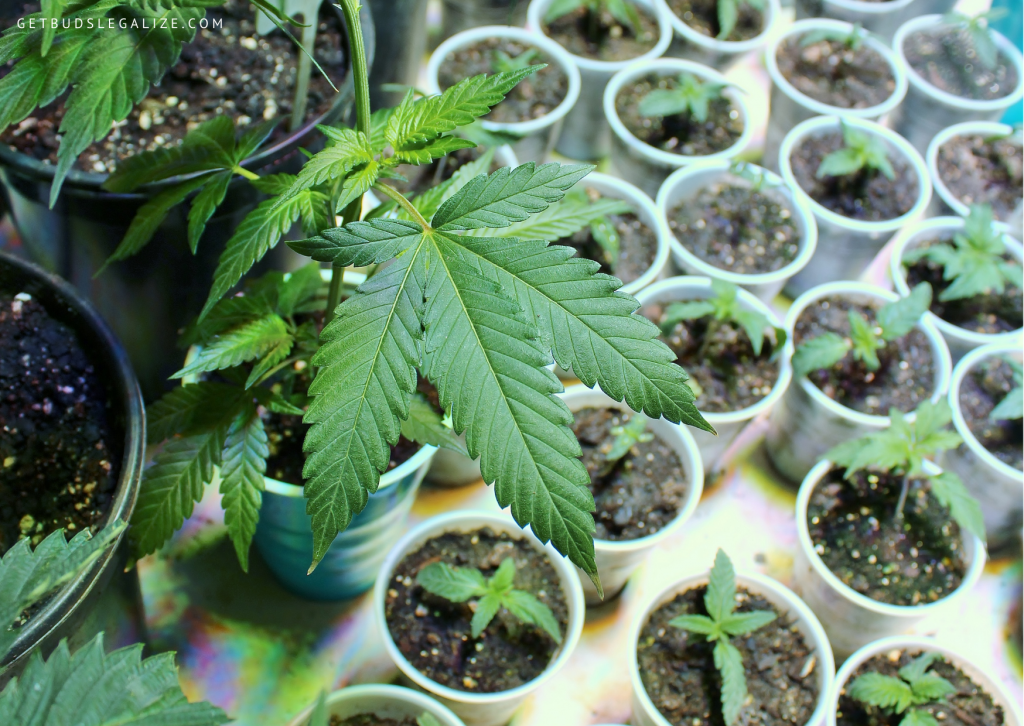
When Is The Right Moment To Stop Watering Before Harvesting?
Every marijuana plant has a different growing cycle, but the general rule of thumb is to stop watering a few days before harvest. (Yes, you read that correctly: Stop watering.) This ensures that all of the plant’s energy goes toward producing bud instead of excess leaves. It will also conserve water and nutrients for when the plant does need them.
Are You Using The Right Size Container?
To give cannabis plants the proper water, they need to be in a container that’s deep and wide enough for their roots to grow. If you put them in a pot that’s too small, the roots won’t possess enough soil to absorb water, which will promote root rot and unhealthy insects.
Try starting cannabis plants in small pots, then moving them to bigger ones as they outgrow each container.
When you’re ready to transplant your plants, check for roots that are wrapped tightly around the soil, strong and healthy root structure is a sign that the plant is receiving proper care.
Determinate The Quality Of The Water You Are Using: Testing pH and PPM
Water is often one of the most important factors when you grow marijuana plants. Water contains many contaminants that are harmful to plants, regardless of the quality. For gardeners to be able to use safe water sources as well as contaminant-free water, they should know which sources they can trust.
Determining the water quality by its pH level. According to pH scales, 7 is the pH level considered neutral. The more acidic the water, the lower its pH level will be. Alkaline water, on the other hand, has a higher pH value.
Cannabis when growing in soil prefers its water to be in the 6 and 7 pH range. In Hydroponic the PH drops down to 5.5 and 6.5.
Another factor in water quality is the presence of dissolved solids. The measurement for this is called ppm, or parts per million. Since most water sources aren’t pure, ppm measures the percentage of contaminants in a given water source.
Water sources can be naturally impure. Streams, ponds, and lakes contain a range of biological contaminants like bacteria and parasites. Water that has higher amounts of minerals, such as calcium or magnesium, is called hard water. This type of water has a higher ppm due to the extra dissolved solids in it. Other sources of water, such as municipal tap water, are treated with some amount of chemicals to prevent the growth of organic organisms.
What Is The Best Watering Cannabis Plants?
Water is the most important nutrient that your plants require. You have many different options to choose from when it comes to your cannabis garden’s water supply. Here is a rundown of water types and how they affect your grow room:
Bottled water
Bottled water is one of the most popular sources of water used for growing marijuana. It’s also one of the most expensive, although you will get what you pay for in terms of quality.
It is often electrolyte enriched, which will contain substances such as calcium and magnesium. These can have a positive effect on plant growth since their presence helps with nutrient uptake.
The pH level in bottled water tends to be lower than tap water and some bottled waters are designed to be more acidic or more alkaline. If you’re going to use bottled or tap water, it’s best to check the pH before watering your plants with it.
The downside to using bottled water is that it’s difficult to find an exact match for your particular tap water. Also, many growers warn that plastic containers can leach chemicals into the water, although this claim has not been verified by studies.
Rain Water
Some cannabis growers buy treated water from their local suppliers to use for their plants. However, many growers believe rainwater is the best option.
Rainwater is free—you can collect it from your rooftop or purchase it from a local supplier for less than $2 per 1000 gallons. The biggest problem with using rainwater when you grow marijuana (or any other plant) is that it doesn’t contain the right minerals plants need to grow healthily. To avoid nutrient deficiencies in your plants, you must first purify the rainwater and add the right minerals.
If you are growing outside, depending on where you live, rainwater may be the best option because it won’t have chlorine or fluoride in it.
Unfiltered Tap Water
Tap water is generally fine to use, but if you have municipal water with a lot of chlorine, it’s best to filter it before using it. You can use something like a Brita water filter pitcher or add charcoal filtration. This is because chlorinated water applied to the roots of a marijuana plant can cause damage to the beneficial bacteria living in the rhizosphere of the roots.
The rhizosphere is an area around the roots where many beneficial microorganisms help protect and improve the growth of your marijuana plants. These beneficial microorganisms get killed by chlorine and other chemicals found in most household products used to treat tap water before use on your plants.
Natural Spring Water
Natural spring water is often very good for your crops and will help your plant grow healthy and strong. The minerals in natural spring waters usually consist of potassium, magnesium, calcium, and sodium among others. These minerals do not pose any problems and can be absorbed by plants.
Reverse Osmosis (RO) Water
The best water for cannabis is reverse osmosis filtered water. The main reason for using reverse osmosis water is that it doesn’t contain any chlorine or other chemicals that might harm your plants. Chlorine and other chemicals are present in municipal water systems, so if you’re using tap water to grow your plants, you need to filter it first with a high-quality reverse osmosis filter.
However, reverse osmosis filters do more than just remove chlorine. They also remove trace elements and minerals such as calcium and magnesium that are essential for plant growth.
This is why it’s important to add minerals back into your water before you use them on your plants. You can purchase mineral mixes from most hydroponics stores or online; however, the cheapest way to add minerals back into your water is to use an Epson salt bath. Epsom salt baths can also be used to treat root rot, a common problem among new cannabis plant growers.
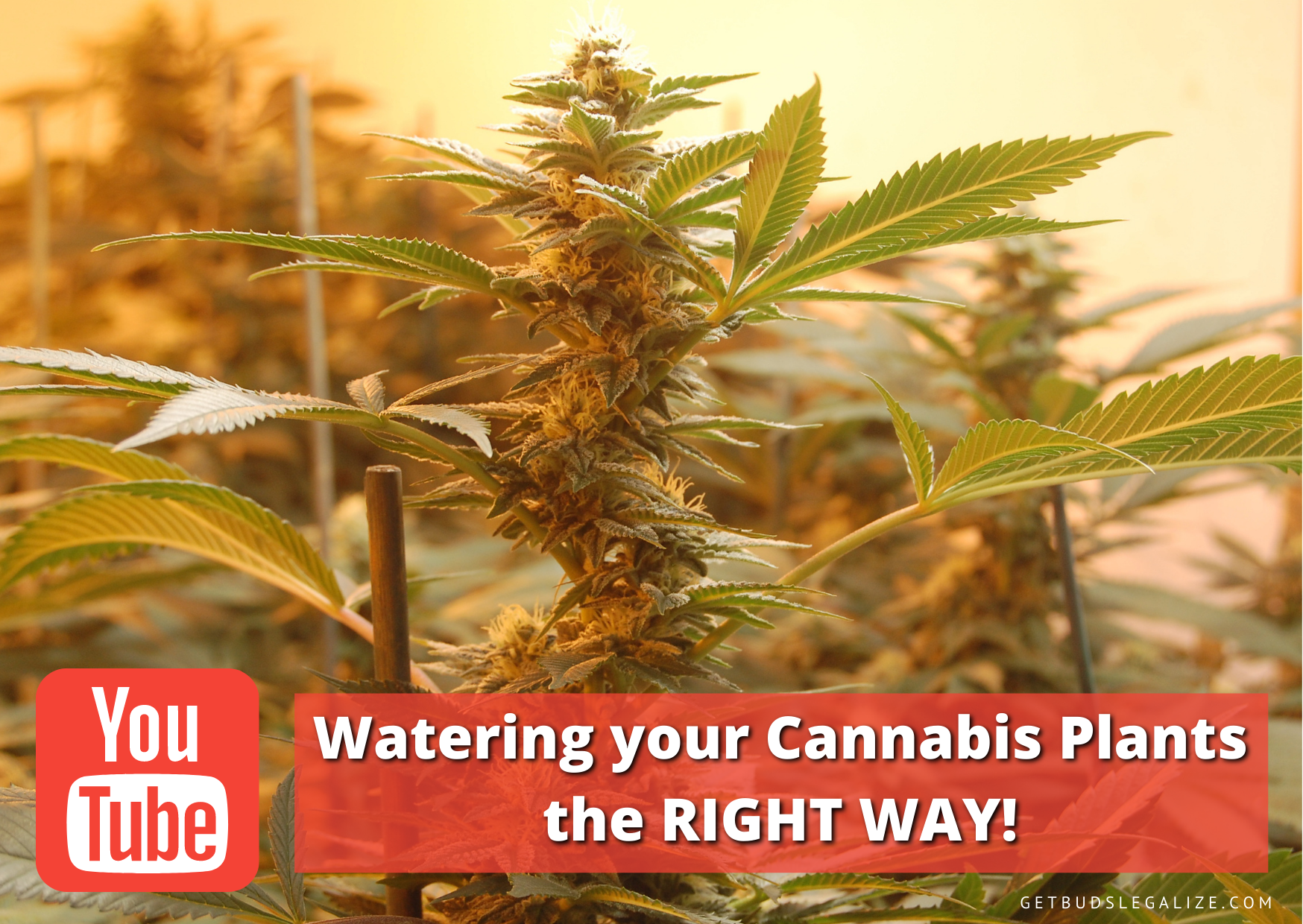
[Watering your cannabis plants in the right way]
What Does Flushing Cannabis Mean?
“Flushing plants” is a term used for rinsing plant’s roots and growing medium with plain water to remove excess salts, minerals, and nutrients.
Plants absorb nutrients from their environment through the roots and store them in the leaves, stems, and flowers. When plants are watered with nutrient solution, those nutrients dissolve into the water. We call it ‘feeding’ our plants.
The problem is that if you continue feeding your plants with the same solution, they will keep absorbing those nutrients over and over again. As a result, the excess of nutrients may cause some serious problems. When you flush your plant, you allow it to get rid of all these excess nutrients stored in its tissues via its roots.
Why Do I Need to Flush My Cannabis Plants?
Flushing cannabis is done for one main reason, preventing nutrient lock-out, meanwhile, you prepare your plants for the flowering stage and harvesting.
Trouble Shooting:
The most common reason growers flush their plants is to combat nutrient lockout. This occurs when a plant has become so used to receiving nutrients in the water that it stops using the nutrients provided by the soil and prevents proper nutrient absorption.
Scorching:
If your leaves are scorched or burnt at harvest (usually due to over-exposure to light), then you have probably experienced nutrient lockout. The plant has been receiving nutrients from the water and has already used up what was in the soil, causing it to use whatever else it can find (ie, nutrients in the leaves).
Pruned Buds:
While not as common as other reasons, buds can be pruned at harvest time if they appear to have been “locked out” of nutrients. Pruning can help prevent bud rot and mold during drying. However, this should only be done if you are sure that your growing medium lacks sufficient levels of nitrogen and/or phosphorous. Otherwise, you risk further stressing your cannabis plants with an abrupt change in the environment.
When Flushing Cannabis In The Vegetative Stage Is a Good Practice?
The best time to flush cannabis is when the phase of the life cycle changes, from vegetative to flowering, and before harvesting. To ensure that you get the maximum yield, it is vital to do good flushing.
Flushing the soil can be a good way to give plants a fresh start, especially when they are in their vegetative stage. With this method, you can remove any excess salts or minerals that may be in your soil and also stimulate the growth of new roots.
If growers are overfeeding their plants, the tips of the leaves can begin to shrivel and turn yellow or brown. This is called “nutrient burn”. By flushing out excess nutrients with plain water, growers can save their plants from dying.
The best time for flushing your plant is the first flush in the transition from the vegetative stage to the flowering stage, and the second flush 2 weeks before harvesting.

When and What Are The Benefits Of Flushing Cannabis Before Harvesting?
Flushing marijuana plants is a process that occurs during the last two/three weeks of flowering, and it’s an important step to achieving optimal flavor and potency.
Clears out any growth-inhibiting chemicals that may be lingering in. Make buds taste better and smell stronger by ridding leaves and buds of chemical residue.
It is crucial to understand the benefits of flushing your cannabis plants before harvest. A flush will help remove any excess salts from the plant, but more importantly, it will also pull additional nutrients from the soil or growing medium.
This is especially helpful if you have been using a heavily fertilized growing method, such as an advanced nutrient program designed for hydroponics systems. The main thing you want to avoid at this stage in the game is over-fertilization, which can lead to nutrients for flower production.
When flushing Cannabis Before Harvesting In Hydroponics System?
It is a common practice in the hydroponic growing community for growers to flush their plants with pure water before harvesting. This final flush eliminates any nutrient salts that have built up in the roots over time, and it also resets the EC meter, so you can monitor exactly how many nutrients are entering your plant. To flush your plants for hydroponics, use water with a pH level of 5.
How To Flush Your Cannabis Plants?
Before you harvest your cannabis, it is advisable to water the plants for a week or so with only plain water. This process will force the plant to use up its nutrients and store them within its tissues.
In the absence of use or breakdown of these nutrients, they may affect the quality of your buds. The length of time required to flush the different growing mediums depends on the type used: For soil, it takes around 14 days; for Rock wool and cocoa, it takes 7 days; for hydroponics, it takes 6 days.
You need to be sure that the growing medium doesn’t contain too many residues or compounds that can interfere with the healthy development of cannabis plants. Cannabis plants utilize nutrients, but they also need oxygen.
Moreover, you must flush your plants well before harvesting them, however, doing so gives the plant a chance to recover from nutrient burn and also gives you an opportunity for easy cleanup. Flushing containers refers to the practice of watering plants with a large amount of water, to remove any buildup of salts and minerals.
To flush your plants, for soil use water with pH levels of 6.0-6.8; fully saturate the potting mix, and repeat 15 minutes later to clear any blockage and make room for new nutrients.
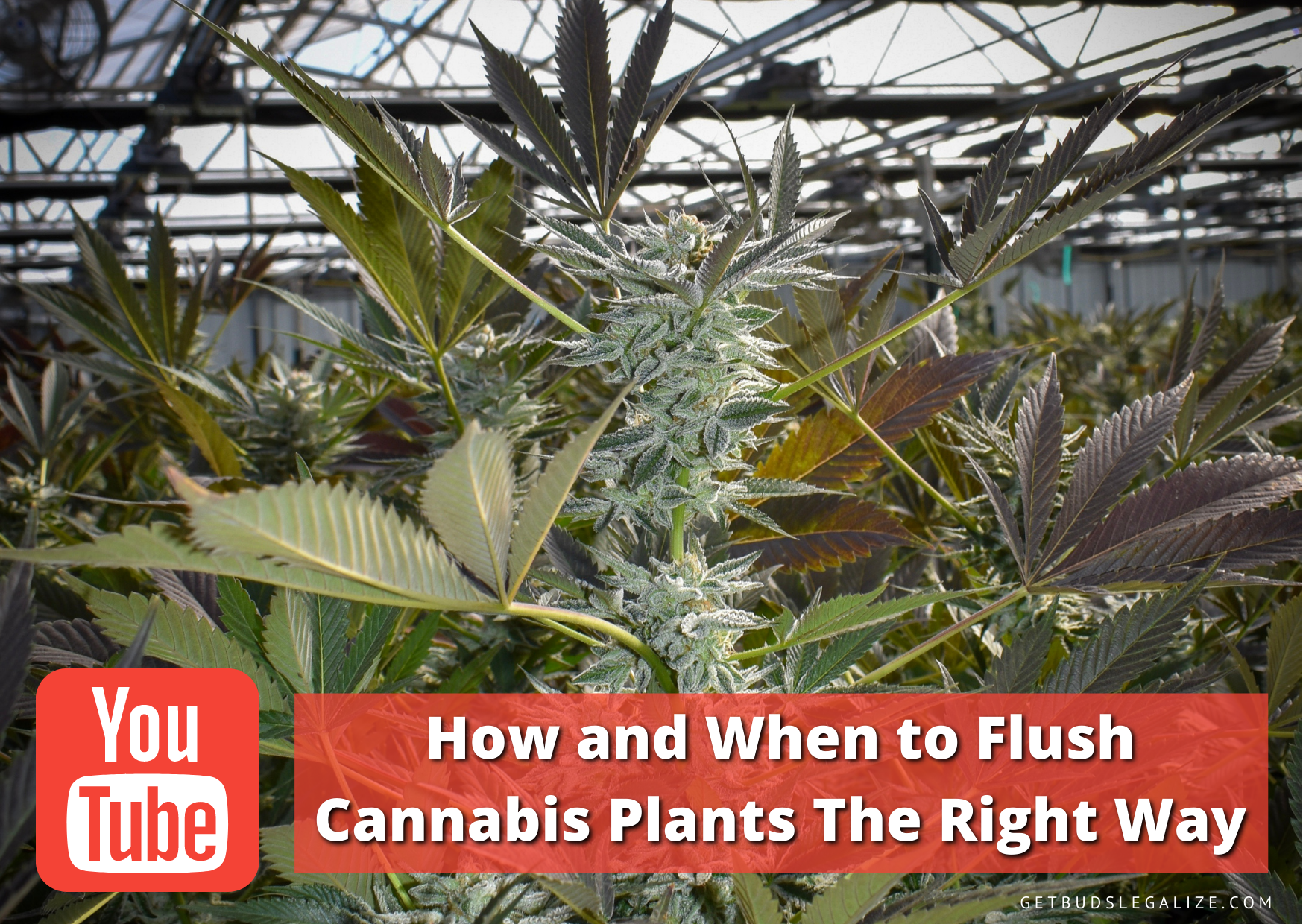
[Flushing Cannabis ]
Flush or Not to Flush: When Flushing Cannabis Is Not Necessary?
When you grow your cannabis in organic soil or super soil, it’s not recommended to flush your plants. Organic soil and super soil both contain beneficial microorganisms that help control pests and aid nutrient uptake. Flushing can wash these microorganisms away, damaging your plant’s health.
In Summary
With the right information, you’ll be able to enjoy the best cannabis possible. Make sure to use our watering and flushing guide when growing your marijuana. Feel free to sign up for our newsletter for further tips on how to grow your cannabis at home.
We hope you’ve found this article helpful and we want to thank you for reading it. If you love cannabis and want to learn more about how to grow cannabis, subscribe to our blog today and follow us!

